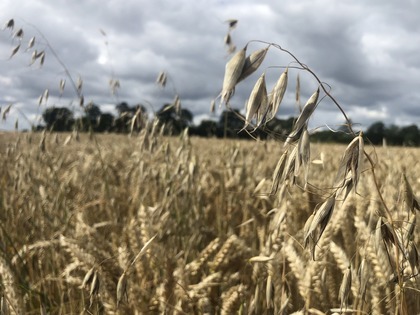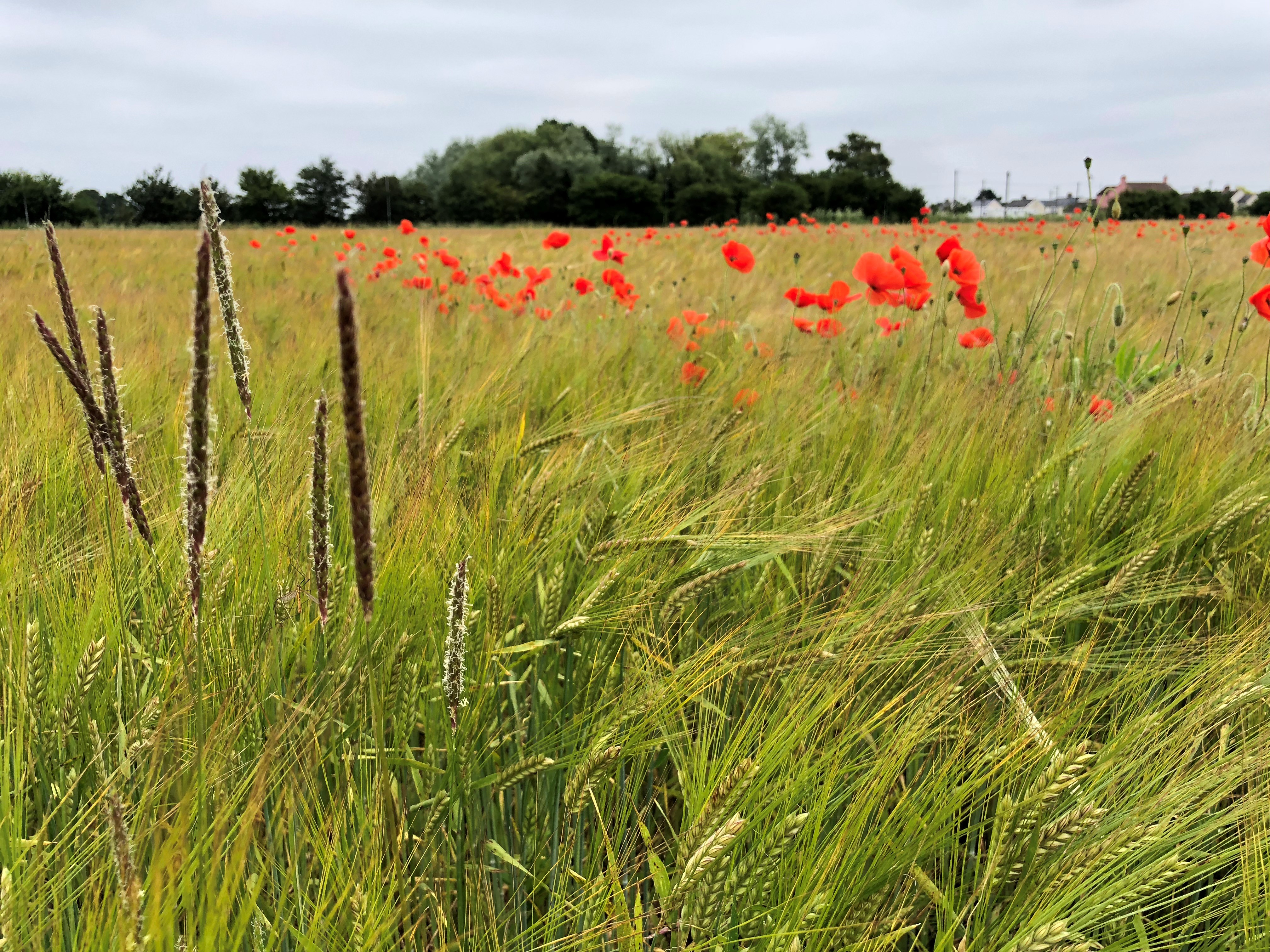
No sooner was my previous blog Orson's Oracle: Taking the pledge written and uploaded than two of the issues covered in the script changed. A neonic seed dressing was given emergency authorisation for use in sugar beet and Defra announced a consultation on gene editing. Perhaps the rapid development of coronavirus vaccines has resulted in a changing attitude towards biotechnology - why else would the French Minister of Agriculture 'France backs non-GMO regulation for crop gene-editing in EU' now support gene editing?
That blog went on a bit, so much so that I did not have the nerve to list my concerns on weed thresholds. So, the following is an abridged version of my reasoning.
Economic weed thresholds
I am initially talking about economic thresholds where, classically, weeds are only controlled once the population builds up to a level where the likely yield response more than pays for the herbicide and its application. This sounds wonderful in theory but anyone who walks fields looking for weeds knows that their numbers and size can be difficult to assess and that they are patchily distributed. Many papers were written about weed patchiness around 20 years ago and some weed scientists at that time assumed that patch spraying might be the way of adopting economic thresholds in practice.
Weeds will be weeds
Most weed scientists are now disillusioned with economic thresholds because weeds will be weeds. Unsprayed weeds set seed and very significant increases in the weed seedbank in the soil can result from not controlling a weed population below the economic threshold. The late and great weed scientist George Cussans, who instigated studies on economic weed thresholds and on weed patches, told me around 30 years ago that the inevitable consequence of patch spraying based on economic thresholds would be the whole field would soon become a patch. Patch spraying using this approach may offer savings on herbicides only in the very short-term. At the time, I was discussing with George a paper that I had just read but now cannot trace. The paper demonstrated that not treating a sub-economic threshold population of wild-oats would lead to higher populations in the following years that would never fall below this threshold even if a single wild-oat herbicide was applied to each ensuing crop.
Staggered emergence is another annoying habit of weeds! Prolonged weed emergence can mean the earliest germinating weeds may be too big to control with a herbicide by the time an economic threshold is ‘triggered’.
Reduced herbicide availability
This brings me to another practical issue which seems to be increasingly working against the adoption of economic weed thresholds. This is the growing challenge from herbicide withdrawals and weed resistance to herbicides. Perhaps in most situations, the industry now does not have the luxury of waiting until all the weeds have emerged to be assessed and then applying the appropriate herbicide treatment should the economic threshold be exceeded. In many cases, there are no chemical options to control weeds much beyond the seedling stage and, in some instances, only pre-emergence herbicides will enable effective control. There is limited herbicide availability in some crops. This means that the level of tolerance in the current crop is reduced for certain weed species if they are impossible to control in a crop grown later in the rotation.
A proposed strategy
After being very explicit in saying what is wrong with economic thresholds, I am beholden to provide an opinion on what is the way forward in trying to moderate herbicide use. Well, I must start with the rotation. Rotating crops and sowing dates reduces populations of most weed species.
There are some circumstances where hand-rogueing is possible and will pay dividends. I am a great believer that any policy to control wild-oats should have, as the endpoint, a total reliance on hand-rogueing. It really makes sense, particularly now, as the vast majority of populations have not yet developed resistance to herbicides (John Cussans, NIAB; personal communication). This is an opportunity to get populations down to rogueable levels, initially with a combination of herbicides and rogueing. Hand-rogueing also has a wider application for getting rid of the occasional plants of black-grass and weeds such as charlock. Never waste an opportunity, where hand-rogueing is possible, to minimise seed return to the soil.
There also needs to be careful thought on how to manage the gap between successive crops. This is where knowledge-based stubble management should be adopted to reduce the seedbank of the most troublesome weeds in the soil. Unfortunately, cultivating stubbles may help to reduce the seedbank of some species and help the preservation of the seedbank of other species. Priorities must be established based on the likely size of the seedbank of individual species and the ease with which they can be controlled in following crops.
There is guidance in the scientific literature on the herbicide strategy to adopt to minimise their use in the long-term. The conclusions should not be a surprise, bearing in mind the issues discussed earlier in this blog.
Thirty years ago, there was a superb AHDB project on economic weed control. The project report can be found on the AHDB website and is a must for those who wish to know more about weed competitiveness and how such data can be used to construct economic thresholds. I doubt if this valuable research needs to be repeated; it is all there in this report. However, this project went further than basic applied-research and tested economic thresholds in field trials. The following are the conclusions of the project, and I quote verbatim:
“The evidence from these experiments favours the reduction of herbicide inputs by applying comprehensive herbicide treatments every year in a prophylactic manner but at reduced rates, in preference to any of the threshold approaches tested. Effects to date on seedbank and weed seedling populations suggest that this will be more sustainable over the longer term.”
Obviously, for reduced rates read appropriate rates. In addition, it is worth saying that this conclusion is not sanctioning spraying a fundamentally weed-free crop.
Pragmatic weed thresholds
Particularly after an earlier herbicide application, there can be very low weed populations where it is hard to justify a herbicide application purely to prevent what might be a very limited increase in the seedbank in the soil - Economic Thresholds and the Case for Longer Term Approaches to Population Management of Weeds. These pragmatic thresholds will depend on many factors, such a soil type, cultivations, rotation, crop competitiveness, soil moisture, weed species, weed development stage, crop growth stage, possible control measures in future crops etc. Can sufficiently accurate scientific guidelines be produced taking all these factors into account? I really doubt it. It is more relevant that, based on local knowledge of weed dynamics, the human brain computes the multitude of factors that need to be considered. This is what agronomists do on a field-by-field basis. By the way, this pragmatic approach is perhaps the opportunity for machine weed detection and targeted spraying to reduce further the use of herbicides.
The human computer needs to be ‘onside’
In my previous blog I suggested that Integrated Pest Management is an attitude of mind and I hope that the person deciding whether or not to apply a herbicide to very low populations of weeds is supportive of the concept. In addition, it must be accepted that if only very low populations of weeds are to be tolerated in crops, then there must be measures on the farm to encourage the biodiversity that higher weed populations would have supported.
